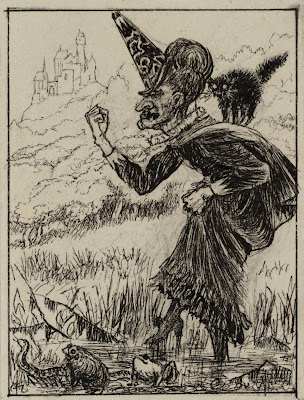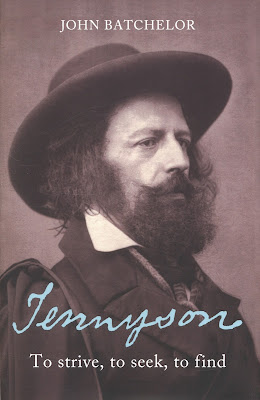Terror of the Soul
comes from a phrase Poe wrote in his preface to Tales of the Grotesque and Arabesque and is the name of the Edgar
Allan Poe exhibit currently running at The Morgan in Manhattan, New York. This is a true Poe exhibit. Here you will not
find letters, painting portraits, from his wife, Virginia Poe or fellow
authoress, Frances Osgood. There was a mention of Poe’s friend and enemy
Griswold in a letter but it is strictly a male dominated exhibit. For instance, within the two rooms are featured framed on the
wall Poe’s handwritten works Annabel Lee
and The Bells, one of the earliest
printings of ‘The Raven’, three
copies of Tamerlane, his earliest
published work, the first printing of The
Cask of Amontillado. Some lesser known works such as A Reviewer Reviewed which is a never-before-exhibited piece he
wrote under a pseudonym and his annotated copy of his last published book, Eureka are here.
Let’s get to some of my favorite pieces…
Now, I could have sworn that I read in one of the magazine exhibit mentions that Edgar Allan Poe's coffin was going to be included in this exhibit. I believe it was in his museum in Baltimore but there was no coffin, here! The Gothic lover in me was intrigued and fascinated at the same time to have an opportunity to cast my eyes upon such an item. In fact, I was tempted to title this review, "Damn, No Coffin!" There was under glass a wood fragment with Poe's faded signature on it, supposedly from his coffin featured in this exhibit along with a bust of Poe in the corner of the room. The bulk of this first room shared space with a smaller exhibit of J.D. Salinger letters, so I walked into the larger red walled room featured above...Here was Utopia...to the right side of this photo was a recent portrait of Poe that was featured by the artist on a stamp. Not a nineteenth-century painting and the only painting included it was beautiful to behold. For me, the highlight were the daguerreotypes featured and the author letters under glass...but I'll get there!

Edgar Allan Poe color portrait by Michael J. Deas (1956) and (2008), The Morgan Library, NYC
You will find three daguerreotypes included in this exhibit.
Two are my favorites and are just really fascinating for different reasons. One
image of Poe’s face represents Terror of the Soul; this is the “Ultima Thule”
daguerreotype. It was made four days after Poe took an overdose of laudanum
which is looked upon as an attempt to take his life. Matthew Brady was believed
to be the photographer but it is a myth which some believe not to be true. As is the case with Edgar Allan Poe, not
every aspect of his life is proven.
Daguerreotype of Edgar Allan Poe by Masury & Hartshorn, [Providence, Rhode Island, November 1848]
Purchased by Pierpont Morgan, 1909
The second daguerreotype was a beautiful smaller image of Poe
in a black leather case. William Pratt opened the Virginia Sky Light Daguerrean
Gallery in Richmond in 1846, seven years after the daguerreotype was introduced
to the United States. According to Pratt, Poe never fulfilled a promise he once
made to pose for him until they bumped into each other on a sidewalk in front
of his gallery in mid-September 1849. Poe said he was not suitably dressed but
was coaxed upstairs and photographed. The image shows a man, as disheveled as
he claimed to be, with a haggard face betraying his emotional condition. Poe
died in Baltimore three weeks later. Pratt held a patent on a daguerreotype
coloring process, used to impart flesh tone to Poe’s face and hand.
William Pratt (1822-1893).
Daguerreotype portrait of Edgar Allan Poe. Daguerreotype photograph, (10 x 7.5 cm.) Richmond, Virginia: Pratt's Gallery, September 1849, The Morgan Library, NYC
An interesting section of the wall housed framed photographs
of some of Poe’s fellow admirers such as:
Oscar Wilde, Sir Arthur Conan Doyle, Walt Whitman and even George
Bernard Shaw! Also, autographed manuscripts
are displayed under glass: Robert Louis Stevenson’s The Strange Case of Dr. Jekyll and Mr. Hyde (1885), Oscar Wilde’s, ‘The Picture of Dorian Gray’ 1896), Sir Arthur
Conan-Doyle’s, ‘The Hound of the
Baskervilles.
Sir Arthur Conan Doyle Oscar Wilde
Autograph Manuscript of Oscar Wilde's 'Dorian Gray'
Robert Louis Stevenson's 'Dr. Jekyll and Mr. Hyde' Autograph Manuscript
My favorite Conan-Doyle story, 'Hound of the Baskervilles' Autograph Manuscript
An interesting engraving found on the wall of Edgar Allan Poe by Thomas B. Welch and Adam B. Walter, 1844, from Graham's Magazine 27, February 1845.
Edgar Allan Poe said of this steel engraving, 'It scarcely resembles me at all!'
The highlight might have been Poe's handwritten poem, Annabel Lee






























